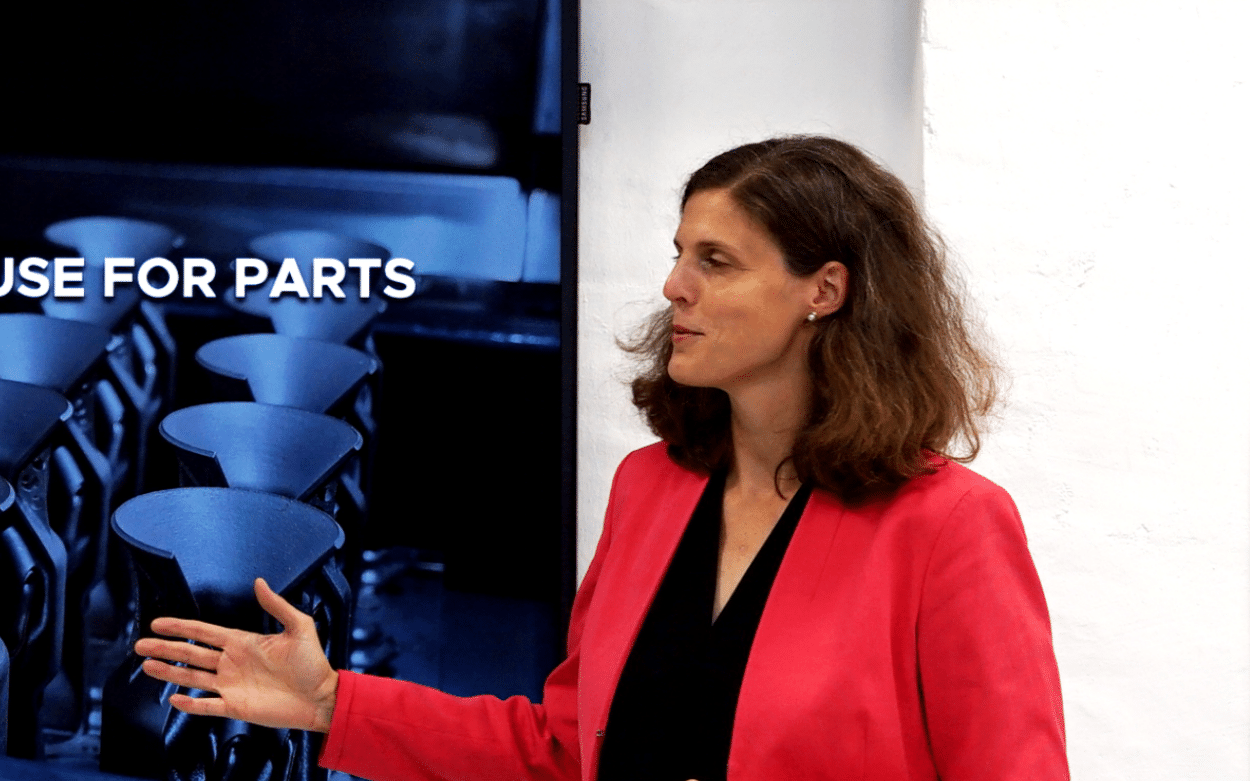What’s the present state of affairs concerning 3D printing/additive manufacturing, its present affect, and what else we are able to count on from the know-how sooner or later?
By Henrike Wonneberger, COO and Co-Founding father of safe 3D printing platform supplier, Replique
Producers are dealing with some important challenges which are reshaping the business panorama. Some of the urgent considerations is the affect of local weather change and the rising buyer demand for sustainability. Shoppers and subsequently regulatory our bodies request extra eco-friendly merchandise, and this development is driving producers to reevaluate their processes and undertake extra sustainable practices. Nonetheless, implementing these adjustments whereas sustaining cost-effectiveness stays a problem for a lot of corporations.
One other main problem is the continuing disruptions within the provide chain. The previous few years have witnessed unprecedented occasions, from pure disasters to world well being crises, which have severely impacted the manufacturing business. These disruptions have highlighted the necessity for extra agile and resilient provide chain processes. Producers now face the stress of minimizing lead occasions, making certain constant availability of important components, and optimizing manufacturing to deal with surprising shifts in demand.
By adopting additive manufacturing (AM), we are able to pave the best way for extra sustainable and resilient processes. AM permits the manufacturing of components on demand. Mixed with a digital stock, it additional eliminates the necessity for bodily warehousing and permits producers to provide solely the amount of components required, exactly when and the place they’re wanted.
Moreover, this strategy drastically reduces waste, on the one hand, by eliminating overproduction and obsolescence in stock, alternatively, in the course of the utilization part of merchandise. The supply of spare components on demand implies that machines and client merchandise may be maintained for longer intervals. This extension of product lifetime contributes considerably to the Restore pillar of sustainability, alongside different rules like reuse, discount, and recyclability.

Alternatives for Producers
The world of manufacturing has undergone a outstanding transformation. Customized merchandise and restricted editions have develop into considerably extra related and half selection rises constantly. The facility of 3D printing lies in its capacity to facilitate this problem. Mass customization permits producers to create merchandise tailor-made to the distinctive wants and preferences of particular person clients.
Not like conventional manufacturing strategies that want expensive manufacturing molds, 3D printing affords the benefit of low ramp-up prices and fast prototyping. Solely a 3D printable design is required to begin manufacturing.
And by that, it additionally permits producers to breed spare components that weren’t obtainable anymore, with out the burden of getting to create extremely costly molds.
One other key advantage of 3D printing is the liberty it offers in design. 3D printing permits the design of intricate constructions that weren’t potential with typical manufacturing strategies. Because of this, producers can now discover new design prospects and innovate with sustainability in thoughts, by creating lighter and extra environment friendly merchandise.
Lastly, 3D printing additionally empowers a reevaluation of provide chain methods, from make-to-stock to manufacturing on-demand. This newfound flexibility permits producers to reply quickly to altering market calls for and optimize their manufacturing processes for larger effectivity.

The Subsequent Period of Additive Manufacturing
The subsequent important change in AM will likely be pushed by developments in supplies and course of automation. As new supplies evolve and improve properties, AM will acquire broader business acceptance.
As well as, prices should come down for 3D printing for use in bigger sequence. Pellet printing exemplifies progressive value discount by simplifying the fabric manufacturing course of in polymer printing. Actual-time monitoring, a prime precedence for industrial corporations to make sure high quality, will additional drive widespread adoption in the course of the printing course of. This may assist clear up any points as they come up and keep the specified stage of high quality.
Nonetheless, within the coming years, extra coaching and training in corporations and universities will likely be required to actually scale up.
It’s fascinating to see how issues are already altering within the manufacturing business proper now. An increasing number of corporations are beginning to understand the potential of 3D printing. They’re reaching out to us for help, whether or not it’s for small sequence or spare half manufacturing.
For the following 5 years, I see an excellent stronger uptake of AM amongst producers. As 3D printing continues to evolve, components will likely be deliberately designed for it from the outset. It’ll develop into an integral facet of provide chains and an ordinary apply throughout numerous industries. This shift will allow corporations to attain extra sustainable and cost-effective manufacturing processes.
For that change, standardization and course of qualification will play an important function in enabling additive manufacturing in response to industrial requirements.